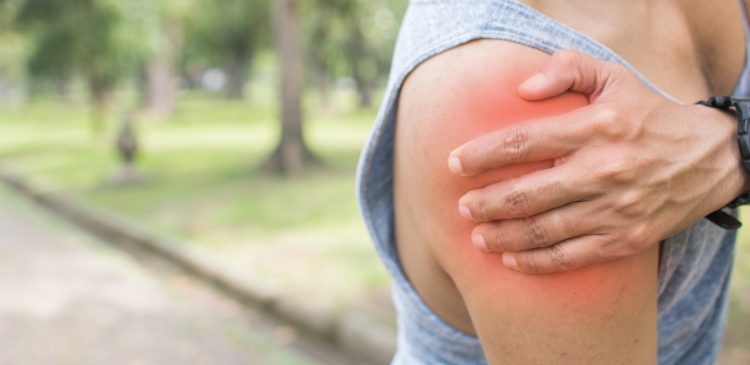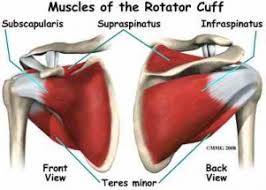The Rotator Cuff Complex

The Delicate Balance of the Rotator Cuff

The Rotator Cuff is a very complex group of muscles. The rotator cuff is comprised of 4 muscles that all originate from the shoulder blade and attach to a relatively broad bony landmark called the greater tuberosity of the humerus. The 4 muscles, from front to back, are the Subscapularis, Supraspinatus, Infraspinatus, and Teres Minor. Below is an illustration of the rotator cuff and how they are specifically orientated with regards to the shoulder.
The rotator cuff represents the deep / inner layer of muscles around the shoulder joint. Due to its proximity to the gleno-humeral joint (the “ball and socket joint” that makes up your shoulder joint structure), its primary job is to approximate the oversized “ball” into the very shallow and undersized “socket” with shoulder movement. It also works as a force coupling with the very powerful deltoid muscles, pectoralis muscles, and latissimus dorsi to create smooth and efficient shoulder movement. However, the balance between these muscles is very delicate and can easily get thrown out of order from heavy lifting, frequent repetitive movement (throwing a baseball, raking leaves), or sudden trauma (falling and trying to break a fall with the arm, slipping on ice). Once this imbalance takes hold, it can result in shoulder pain when reaching for objects, reaching overhead, simply lifting the arm, or even lying on your arm to sleep. Common diagnoses include rotator cuff impingement syndrome, rotator cuff tendonitis, or rotator cuff tear. Luckily there are many exercises that can help you build strength in your rotator cuff to re-establish the necessary balance within the shoulder to allow for proper and efficient movement.
Here are a couple of our favorite exercises to help build strength specifically in the rotator cuff:
As stated in a previous blog proper shoulder function also depends on the proper positioning and function of the scapula and its associated muscles. Your particular case may require a combination of rotator cuff exercises as well as scapular stabilization exercises to resolve your pain. This is where you will benefit from an evaluation from one of our highly trained Physical Therapists to determine which combination of exercises would be best for you. If you have pain in your shoulder with movement or repetitive activity, feel free to try these exercises.
